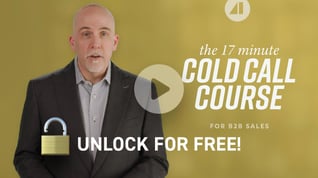Discover the secrets to effortlessly displacing your competitors and achieving sales success with these proven strategies.
The first way you make it difficult to displace your competitor is by trying to convince your prospective client to change to your solution. This doesn’t work because it is a weak reason to change. An effective sales conversation helps the client answer the question, “Why change?”
In the last month, three salespeople called me to pitch their software. The first sales rep was hyped up about his company’s CRM and asked me to spend 30 minutes on a demo. I asked him if his CRM had boxes for first names, last names, phone numbers, and emails.
The second sales rep also asked for a demo, and he was brazen enough to confess that he only got paid if I watched his demo. I suggested that he might be eating ramen noodles for a while. I asked the sales rep for his “why change.” I explained that without a compelling reason why his clients should change, he wasn’t going to do well. He asked if he could call me back in five minutes. When he called back, he had a compelling reason why I should change providers.
Becoming an Industry Expert
When you are in love with your company and your solution, you make it more difficult to displace your competitor. It is likely that your contact will treat you as a commodity and decide to keep their current provider. If your approach has you talking about your company, your clients, or your solutions, you are starting the conversation at a level that is too low to compel change.
You are better off positioning yourself as a peer and expert on the strategic outcomes the decision-maker needs. No one wants to buy your solution; they want to buy the better strategic outcomes that move the needle and their goals. No one wants to buy sales training; they want to increase win rates, resulting in the revenue they are chasing. We call this Level 4 Value Creation.
Creating Value and Correcting Information Disparity
At first glance, your contacts will expect that you are just another peddler hawking your wares. If you want them to give you their time and attention, you need to create value by correcting their information disparity. If you are unable to brief your contacts on the trends in your industry and their impact on their results now and in the future, there is no reason to change.
My methodology provides an executive briefing in the first meeting. In this meeting, we explain “why change.” If you sell for years and still have to ask your client about their problems, you look like a greenhorn, someone who isn’t an expert. If you don’t know your client’s problems better than they do, you will struggle to displace your competitor.
The Importance of Being a Subject Matter Expert
Most salespeople are experts on their company and their solutions. Starting during onboarding, they are trained to believe that this is the most valuable information. In reality, you are often better off not mentioning your company, clients, or solution, or trying to build rapport, unless you use a set of insights that we can describe as business rapport.
In Elite Sales Strategies: A Guide to Being One-Up, Creating Value, and Becoming Truly Consultative, we describe this as being One-Up. It means you have greater knowledge and experience than your contact about the problems they face. This approach allows you to cause your contact to feel safer with you than they do with your competitor.
Building a Long-Term Strategy to Displace Competitors
Most of your attempts to displace your competitor will take time. You will need a sequence of communications that showcase for your contacts the valuable information and insights that hint at “why change.” If you need to displace at scale, you might make a list of 60 prospective clients that you will pursue over time. By reaching out to three dream clients each day, you can touch all 60 over the course of a month.
Over time, you can pick off your competitor’s clients. Your competitor may start to take the client for granted. They may also believe that their contract will secure their relationship. They may be complacent, entitled, or apathetic. The client may have long-unaddressed needs or face a lack of communication. Your competitor may fail to create new value. You may also find that your competitor resents the client or a new stakeholder takes over.
The Future of B2B Sales and the Need for Strategic Approaches
We are coming into a period when B2B sales will change because the Baby Boomers will all be out of the workforce in 2030. At the same time, there are too few children to replace our current population. When the population falls, demand falls along with it. This means we will need fewer, better salespeople, the kind that can create value for their competitor’s contacts and steal them away.
If you want to succeed in B2B sales, you will need a set of strategies that allow you to win clients away from your competitors.
Conclusion
If you sell for a company with many competitors all selling something that looks like a commodity, you can blunt the idea that you are a commodity by approaching B2B sales as an industry expert and an authority. Let your lookalike competitors show up without any real value for their clients.
It is also important to know that we have left the Era of the Solution and are deep into the Era of Decision-Making, where uncertainty causes buyers to seek out a salesperson who can ensure they are able to make a rare, important change that they must get right on the first attempt. Do good work and build your portfolio from your competitor’s client list.












